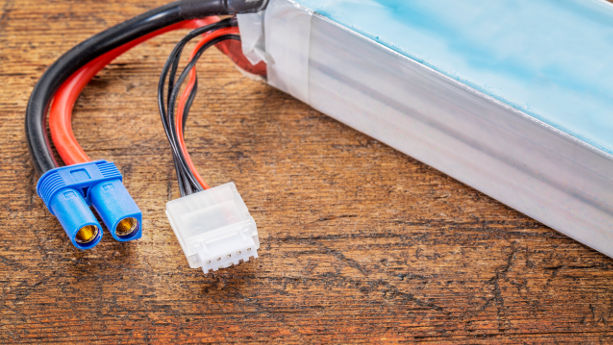Lithium batteries are potentially dangerous products, as they can catch fire, or even explode. This can happen, for example, because the product or the battery itself is defective, overcharged, or overheated. For this reason, it is key to follow safety standards, regulations and other requirements that help you to ensure that the batteries are safe.
In this guide, we cover regulations and standards like the Hazardous Materials Regulations, Reese’s Law, and the Consumer Product Safety Improvement Act (CPSIA).
Not that additional requirements may apply to the product that contains lithium batteries. However, this guide is primarily focused on requirements applicable to lithium batteries specifically.
Content Overview

FREE CONSULTATION CALL (US, EU & UK)
- Request a free 30-minute call with Ivan Malloci to learn how we can help you with:
- Find product requirements
- Certification and labeling
- Lab testing
UL Standards
Underwriters Laboratories (UL) is a testing and standard-developing company that publishes product safety standards, including those for lithium batteries and products containing lithium batteries. They also have testing services to verify compliance with the applicable UL standard.
Although the application of UL standards is often voluntary, unless they are incorporated by reference in a regulation, in practice you may be required to follow a UL standard for many reasons, including the following:
a. You are selling on Amazon or other marketplace that requires you to apply UL standards as a condition to selling on their platform
b. You are engaging a purchasing client that requires the product to meet UL standards
c. You want to avoid issues such as recalls, due to unsafe products
Below we list some UL standards that concern lithium batteries.
UL 1642 – Lithium Batteries
UL 1642 covers primary and secondary lithium batteries used to power products. The standard’s focus is on the prevention of risks of fire or explosion:
a. When the battery is used in a product
b. When the battery which is user-replaceable is removed from the product and discarded
UL 60086-4 – Standard For Safety For Primary Batteries – Part 4: Safety Of Lithium Batteries
UL 60086-4 covers primary lithium batteries. The standard is focused on the safe operation of the battery under both intended and foreseeable use.
UL 4200A – Standard for Safety for Products Incorporating Button Batteries or Coin Cell Batteries
UL 4200A is incorporated into a federal regulation that enforces Reese’s Law’s requirements. The standard covers consumer products containing button batteries or coin cell batteries, including lithium button batteries or coin cell batteries. The standard requires a product’s battery compartment to be secure and that it comes with appropriate labeling information.

CPSC Recommendations
The Consumer Product Safety Commission (CPSC) is a federal agency tasked with ensuring that products in the US market are safe.
The CPSC publishes a number of guides for certain product categories and offers recommendations for the application of voluntary standards, including those that apply to lithium batteries. Here are some of the recommended standards by the CPSC for lithium batteries in products:
a. ANSI/NEMA C18 – Safety Standards for Primary, Secondary and Lithium Batteries
b. ASTM F2951 – Standard Consumer Safety Specification for Baby Monitors
c. ASTM F963 – Standard Consumer Safety Specification for Toy Safety
d. IEEE 1625 – Standard for Rechargeable Batteries for Multi-Cell Computing
e. IEEE 1725 – Standard for Rechargeable Batteries for Mobile Telephones
Hazardous Materials Regulations (HMR)
The Hazardous Materials Regulations regulates the transportation of hazardous materials, including lithium batteries. The HMR contains testing, labeling, documentation, and packaging requirements.
UN 38.3 testing
The HMR requires lithium batteries to adhere to UN 38.3 contained in the United Nations Manual of Tests and Criteria. UN 38.3 contains criteria, test methods, and procedures for the transportation of lithium batteries.
Other requirements for lithium batteries
Other requirements for lithium batteries are outlined in entries under the “Hazardous Materials Table” contained in 49 CFR Part 172. The entries for various types of lithium batteries will direct you to different parts of the regulation that cover requirements like the following:
- Packaging requirements
- Documentation
- Labeling information
- Special provisions
- Quantity limitations
Requirements for lithium button cell and coin batteries
Reese’s Law
Reese’s Law is an act that affects button cell and coin batteries, and products containing button cell or coin batteries.
It requires the CPSC to publish a safety standard for the battery compartment of products to ensure that they are secure, contains warning labeling requirements, and require child-resistant packaging for button cell or coin batteries.
16 CFR Part 1263 – Safety Standard for Button Cell or Coin Batteries and Consumer Products Containing Such Batteries
The CPSC introduced 16 CFR Part 1263 to put into effect the requirements of Reese’s Law. UL 4200A is incorporated into the regulation, making it a mandatory standard, and serves as the performance standard for battery compartments for products containing button cell or coin batteries, including lithium batteries.
Additionally, 16 CFR Part 1263 contains labelling requirements for the packaging of:
- Button cell and coin batteries
- Products containing button cell or coin batteries
General Certificate of Conformity
A General Certificate of Conformity is a mandatory document that needs to be issued for products that are affected by CPSC regulations (e.g. 16 CFR Part 1263). The certificate should contain the following information about the product’s compliance with the applicable regulation(s):
- Product information
- List of applicable CPSC safety rules
- Your company name and contact details
- Name of the person maintaining the test report(s) records
- Date and place of production and testing
- Information about the third-party testing company that performed the test
Consumer Product Safety Improvement Act (CPSIA)
The CPSIA contains substance restrictions, labeling, documentation, and testing products for children’s products, including products that are powered by lithium batteries.
Below we focus on ASTM F963 which is a standard made mandatory for toys and some children’s care articles due to its incorporation in federal regulation under the CPSIA.
Note that there are other standards that cover products powered by batteries such as ASTM F2923 which covers children’s jewelry.
ASTM F963 – Standard Consumer Safety Specification for Toy Safety
This standard covers toys and some children’s care articles, including products powered by lithium batteries. Here are some requirements affecting products using lithium batteries:
- Small parts testing
- Battery compartment requirements
- Warning labels
Children’s Product Certificate (CPC)
A Children’s Product Certificate is a document that must be issued for children’s products. The CPC is based on test reports retrieved from CPSC-accepted lab testing companies. The information that a CPC should contain is as follows:
- Product information
- List of applicable CPSC safety rules
- Your company name and contact details
- Name of the person maintaining the test report records
- Date and place of production and testing
- Information about the third-party testing company that performed the test
Test report
The test report received from the CPSC-accepted lab testing company are required to create the CPC. Without the test reports, you would not be able to identify key information for the CPC like the name of the person maintaining the test report records.
Labeling requirements
| Title | Description |
| Tracking label |
|
| Small part warnings | The CPSIA requires that children’s products containing choking hazards like small parts, should come with a choking hazard warning label. Other type of warnings may also be required |
Lab testing
As lithium batteries are dangerous articles, it is paramount that they and products containing lithium batteries be tested against the relevant safety standards. Test reports proving compliance with applicable safety standards should be sought after.
Testing requirements differ among standards as different standards are created to address different topics. For instance, a standard like UL 4200A focuses on the secureness of the battery compartments and it requires tests that prove that the product battery compartment is not easily accessible.
The application of some standards that aren’t required by regulations may be voluntary in theory. However, in practice, you should comply with relevant safety standards to ensure that your product is safe.
In the table, we list some examples of tests that would need to be conducted under the various sources of safety standards presented in this guide.
| Regulation | Lab testing |
| UL standards | UL standards that are relevant to lithium batteries require tests such as the following:
|
| Hazardous Materials Regulations (HMR) |
|
| 16 CFR Part 1263 |
|
| CPSIA |
|
Lithium battery testing companies
The following lab testing companies can provide testing for lithium batteries and products containing lithium batteries against the safety standards mentioned in this guide:
- UL Solutions
- SGS
- Intertek
Additional Requirements
Lithium batteries and products containing lithium batteries are also affected by other regulatory requirements in addition to those presented above:
| Regulation | Description |
| California Proposition 65 | California Proposition 65 requires that products, including lithium batteries, be tested for substances like heavy metals, phthalates, and other substances. The regulation also contains warning label requirements. |
| Country of origin | Consumer products should contain a country of origin marking, this includes articles like lithium batteries and lithium battery-containing products. |
| Uniform Packaging and Labeling Regulation (UPLR) | The Uniform Packaging and Labeling Regulation has been adopted by various US states and it contains labeling requirements for the packaging of consumer products, including lithium batteries and lithium battery-containing products. |
| Fair Packaging and Labeling Act (FPLA) | The Fair Packaging and Labeling Act has labeling requirements for the packaging of certain products, including:
As some medical devices may be powered by lithium batteries, such requirements should be observed. |
| Amazon requirements | Amazon has specific requirements for lithium batteries and certain products powered by lithium batteries. See the article below on Amazon lithium battery requirements for more helpful information. |
Recommended articles
- California Proposition 65 Guide for US Importers & Amazon Sellers
- Country of Origin Requirements in the United States: An Overview
- Uniform Packaging and Labeling Regulation (UPLR): A Complete Guide
- Fair Packaging and Labeling Act (FPLA) for Importers & Manufacturers
- Amazon Lithium Batteries Requirements For Sellers: An Overview




















